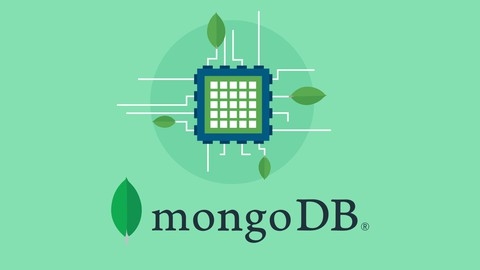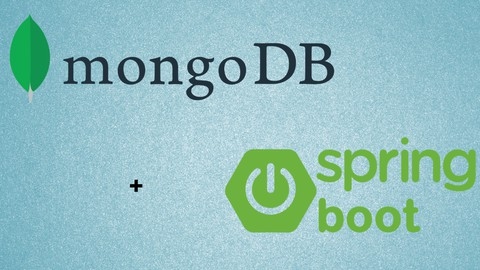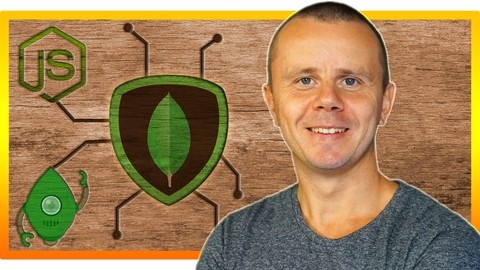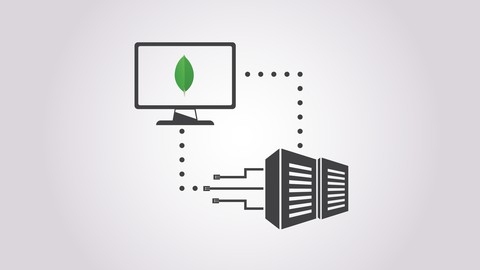MongoDB is a popular NoSQL database that uses a document-oriented data model.
It’s a powerful and flexible tool for storing and managing data, especially in applications that require scalability, high availability, and the ability to handle unstructured data.
Learning MongoDB can open doors to exciting opportunities in web development, data science, and cloud computing.
Finding a high-quality MongoDB course on Udemy can be a daunting task, with so many options available.
You’re looking for a course that’s comprehensive, engaging, and taught by experts, but also fits your learning style and goals.
You want a course that goes beyond theory, providing practical experience and hands-on projects to solidify your understanding.
We’ve reviewed countless courses and based on our analysis, MongoDB - The Complete Developer’s Guide 2024 is the best course on Udemy overall.
This comprehensive course covers everything from the fundamentals of MongoDB to advanced topics like aggregation, indexing, and security.
It also includes numerous practical projects and hands-on exercises to help you solidify your knowledge.
While MongoDB - The Complete Developer’s Guide 2024 is our top pick, there are other great options available on Udemy.
Keep reading to explore our recommendations for different learning styles and goals, from beginner-friendly introductions to advanced courses focused on specific use cases and technologies.
MongoDB - The Complete Developer’s Guide 2024
You’ll start by understanding the key characteristics that differentiate MongoDB from traditional SQL databases.
The course covers the MongoDB ecosystem, installation, and setting up the environment.
Next, you’ll dive into the basics of CRUD (Create, Read, Update, Delete) operations using the MongoDB shell and drivers.
You’ll learn about databases, collections, documents, JSON data, and BSON.
The course explores embedded documents, arrays, and how to access structured data.
An important aspect is understanding schemas and relations in MongoDB.
You’ll learn about different data types, structuring documents, and implementing one-to-one, one-to-many, and many-to-many relations using embedded and referenced approaches.
Schema validation is also covered.
The course delves into exploring the MongoDB shell, server options, and using the MongoDB Compass for visual data exploration.
You’ll gain insights into create, read, update, and delete operations, including methods, filters, operators, querying, projections, and cursors.
Indexing is crucial for performance, so you’ll learn about different index types, such as single-field, compound, partial, and text indexes.
The course also covers geospatial data, the aggregation framework, and working with numeric data types.
Security is an essential aspect, and you’ll learn about role-based access control, user management, and encryption.
Performance, fault tolerance, deployment options (including MongoDB Atlas), and transactions are also covered.
Transitioning from the shell to drivers, you’ll build a project using Node.js and the MongoDB driver, implementing features like authentication, data access rules, and pagination.
Finally, the course introduces Stitch (now MongoDB Realm), a serverless platform for building modern applications.
You’ll learn about authentication, data access rules, functions, and triggers.
Throughout the course, you’ll find useful resources and links to deepen your understanding of each topic.
The Complete Developers Guide to MongoDB
You’ll start by setting up MongoDB on your system, whether you’re on macOS or Windows, and get familiar with MongoDB Compass, a powerful GUI for working with MongoDB.
Next, you’ll dive into the core fundamentals of MongoDB, including where it’s commonly used and how it differs from traditional relational databases.
The course then takes a test-driven approach, guiding you through building a project using Mongoose, a popular Object Document Mapping (ODM) library for MongoDB and Node.js.
You’ll learn how to create models, save data, query records, handle validations, and work with embedded and referenced data.
As you progress, you’ll explore advanced topics like MongoDB middleware, pagination, sorting, and text search.
The course also covers schema design principles, helping you make informed decisions about when to use embedded documents versus separate collections, and how to handle associations between data.
But the learning doesn’t stop there.
You’ll also learn how to integrate MongoDB with Node.js and Express, building a full-fledged API.
This includes designing API routes, handling HTTP requests, testing with Mocha and Postman, and separating development and test environments.
If you’re interested in working with geospatial data, the course has you covered.
You’ll learn about GeoJSON and how to perform powerful geospatial queries using MongoDB’s built-in geospatial capabilities.
Throughout the course, you’ll work on practical projects, solidifying your understanding of the concepts covered.
The instructor’s test-driven approach ensures you gain hands-on experience with MongoDB, Node.js, and related technologies.
Introduction to the MongoDB
You’ll start by learning about the key differences between relational and document databases, and how MongoDB’s structure allows for flexible data storage.
Next, you’ll dive into installing MongoDB locally and connecting to it through the MongoDB Shell.
The course also covers using MongoDB in the cloud, as well as exploring GUI tools like Robo 3T.
A major focus is on data formats in MongoDB.
You’ll learn about JSON, the difference between JSON and JavaScript objects, and how data is stored using the BSON format.
The course explains extended JSON for representing data types, and how those types map to BSON.
With that foundation, you’ll practice creating collections and inserting sample documents.
The course covers finding documents using methods like find() and findOne(), along with query operators for more advanced filtering.
You’ll also learn how to sort, limit, and skip results.
Updating and deleting documents are key skills covered, including update operators and the updateOne()/updateMany() methods.
For deletions, you’ll use deleteOne() and deleteMany().
The course goes beyond basics to advanced features like the Aggregation Framework for data processing pipelines.
You’ll explore indexing for improved query performance, as well as utilities, replica sets for high availability, and MongoDB drivers for application development.
Throughout, you’ll get plenty of hands-on practice inserting, querying, updating, and deleting data.
By the end, you’ll have a solid grasp of MongoDB’s core capabilities and be ready to start using it in your own projects.
MongoDB with Java Spring Boot & Spring Framework
You’ll start by understanding what MongoDB is and how it differs from traditional SQL databases.
Once you’ve grasped the basics, you’ll dive into installing MongoDB and its tools like Studio 3T and MongoDB Compass.
From there, the course walks you through CRUD operations, querying techniques like AND, OR, IN queries, and more.
You’ll learn how to perform these operations both directly in MongoDB and through Spring Boot, leveraging powerful features like MongoRepository and entity class mapping.
The course doesn’t stop at just CRUD; you’ll explore advanced querying, pagination, sorting, working with subdocuments and arrays, and even implementing “like” and “starts with” queries.
You’ll also learn about the @Transient annotation from Spring Data.
But the real excitement begins when you move to cloud deployment.
You’ll get hands-on experience deploying your MongoDB-powered Spring Boot applications to platforms like Pivotal Cloud Foundry (PCF) and Heroku.
This includes setting up accounts, configuring MongoDB on the cloud with mLab and MongoDB Atlas, and leveraging tools like Git and the Heroku CLI.
The course also covers important concepts like relationships between collections in MongoDB and lazy loading.
You’ll learn how to create documents with references and retrieve them by reference ID.
Additionally, you’ll explore native MongoDB queries in Spring Boot using the @Query annotation.
Throughout the course, you’ll work with the latest versions of MongoDB Server and tools, ensuring you’re up-to-date with the latest features and best practices.
The course even includes a bonus lecture, making it a truly comprehensive resource for anyone looking to master MongoDB with Spring Boot.
Complete MongoDB Administration Guide
You’ll start by learning about MongoDB’s document-oriented data model, JSON, and BSON formats.
The course then walks you through different installation options, whether on your local machine, a dedicated server, or a cloud service like MongoDB Atlas.
Once you have MongoDB set up, you’ll dive into the MongoDB shell, exploring its JavaScript syntax and learning how to perform basic CRUD (create, read, update, delete) operations.
The course covers MongoDB’s primary data types in depth, including ObjectId, Date, and ISODate.
From there, you’ll learn how to construct complex queries using operators like $eq, $gt, $in, $and, and $or.
You’ll also learn to query embedded documents and arrays using techniques like $elemMatch.
Updating documents is covered thoroughly, including array update operators like $push and $pull, as well as the positional $ operator.
The aggregation framework, a powerful tool for data analysis, is explored in detail.
You’ll learn how to use aggregation stages like $match, $group, $project, and $unwind, as well as accumulators like $sum and $avg.
Indexing is another key topic, with guidance on creating indexes, analyzing query performance with explain(), and managing indexes.
Finally, you’ll learn about MongoDB’s utilities like mongoexport, mongoimport, mongodump, and mongorestore for tasks like data export, import, and backup/restore.
The course wraps up with an overview of monitoring tools like mongostat and mongotop.
Throughout the course, you’ll have opportunities to practice what you’ve learned with hands-on exercises.
The Complete MongoDB Course
The course starts by introducing you to NoSQL databases and MongoDB, explaining what they are and how they differ from traditional SQL databases.
You’ll learn about the MongoDB ecosystem, including replica sets and clusters, as well as the advantages of using MongoDB.
Next, you’ll set up your environment by creating an Atlas cluster, installing the necessary tools like the MongoDB Shell, Compass, and database tools.
The course covers importing and exporting data using both the graphical interface and command line tools.
A significant portion of the course is dedicated to the MongoDB Query Language (MQL).
You’ll learn how to create, read, update, and delete databases and collections using MQL.
The course covers various operators like comparison, logical, element, and cursor methods, as well as projections and querying embedded documents and arrays.
The Aggregation Framework is another major topic covered in-depth.
You’ll learn about the aggregation pipeline, stages like $match, $project, $group, $bucket, $facet, $sortByCount, $unwind, and $out, as well as expression operators for arithmetic, strings, dates, comparisons, arrays, and conditionals.
The course also teaches you how to combine these stages and use variables in aggregation expressions.
Data modeling and schema validation are essential topics covered, including considerations like limits, thresholds, writeConcern, and ordered inserts.
You’ll learn about different types of relationships and schema patterns.
Indexing and performance optimization are also covered, with topics like single-field indexes, compound indexes, partial indexes, and using the $explain method to analyze query performance.
Finally, the course introduces you to MongoDB drivers, specifically for Python, covering basic CRUD operations and using the Aggregation Framework with drivers.
Throughout the course, you’ll work on assignments and quizzes to reinforce your learning, and you’ll have access to additional resources for further exploration.
Practical MongoDB + PHP: For Absolute Beginners
You’ll start by learning the fundamentals of MongoDB, including installation and basic queries.
As you progress, you’ll dive into advanced querying techniques, equipping you with the skills to handle complex data manipulation tasks.
The real-world application begins with a basic PHP and MongoDB project, allowing you to apply what you’ve learned so far.
You’ll embark on an advanced project that spans multiple parts, providing a deep understanding of integrating MongoDB with PHP for real-world applications.
The course also includes a bonus section on PHP basics and advanced concepts, ensuring you have a solid foundation in the language.
Additionally, you’ll learn how to work with Git for version control, JSON for data exchange, and XML for structured data handling.
Learn MongoDB in 2 hours
You’ll begin by learning what MongoDB is and understanding its use cases and limitations.
This will give you a solid foundation before diving into the installation process.
Once you have MongoDB set up, the course will take you through CRUD operations - the bread and butter of working with databases.
You’ll learn how to find documents, insert new ones, update existing data, and delete records you no longer need.
The course covers filtering, projections, and working with various operators like $in, $gte, $regex, and more.
Working with arrays is a common requirement when dealing with MongoDB, and this course has you covered.
You’ll learn how to set up arrays, use the $all operator, add and remove elements, update arrays, and project specific array elements.
The course also introduces you to MongoDB Compass, a graphical user interface that can make working with MongoDB easier.
You’ll learn how to use this GUI to perform various operations.
Importantly, the course covers validation and schema design, which are crucial for maintaining data integrity.
You’ll learn how to apply validation rules and define schemas for your collections.
Indexing is another key concept covered, as it can significantly improve query performance.
You’ll understand how to work with indexes in MongoDB.
MongoDB 3.2: Professional Developer
You’ll start with an introduction to MongoDB, its main features, limitations, and components.
This lays the groundwork for understanding how MongoDB works and what sets it apart.
The course then dives into installation on Ubuntu and Windows, ensuring you can get MongoDB up and running on your preferred operating system.
Once you have MongoDB installed, you’ll learn about the MongoDB server, clients like the mongo shell and Robomongo, and how to interact with data stored in MongoDB.
This includes an in-depth look at the document data model, collections, and databases in MongoDB.
A major focus is on CRUD (Create, Read, Update, Delete) operations.
You’ll learn how to insert, find, update, and remove documents in MongoDB using various methods and operators.
This covers everything from basic inserts to complex queries involving logical operators, document structure conditions, embedded documents, arrays, projections, sorting, and limiting results.
Indexing is crucial for optimizing MongoDB performance, so the course covers creating, listing, and deleting indexes.
You’ll learn about single field indexes, compound indexes, unique and sparse indexes, multikey indexes, and covered queries.
Special index types like full-text search and geospatial indexes are also explored in depth.
The course dives into special MongoDB features like collections with specific behaviors (capped, TTL) and document validation rules.
You’ll learn the powerful aggregation framework for data processing and analysis, including using operators like $match, $project, $group, $unwind, and more.
For application development, you’ll learn schema design principles like embedding vs. linking documents for different relationship types.
The course also covers replica sets for high availability, sharding for horizontal scaling, GridFS for storing large files, and other advanced topics.
Throughout the course, you’ll work on homework assignments to reinforce your learning.
Quizzes are included to test your understanding of key concepts.









